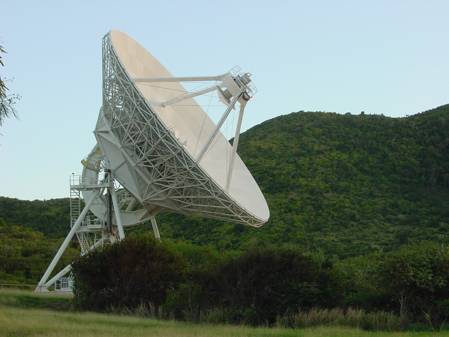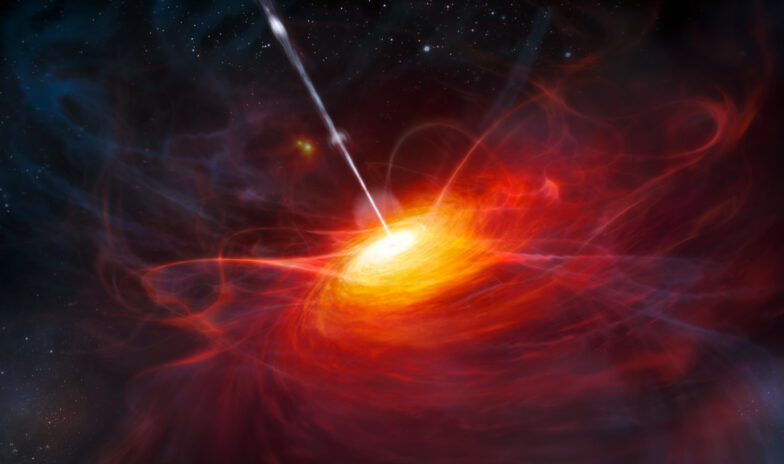Results from Two Research Teams Improve Direct Distance Measurements and Strengthen the Creation Model, Part 1 (of 2)
Recent work by two different teams of astronomers—one headed up by Mayumi Sato of the University of Tokyo and the other by James Braatz of the National Radio Astronomy Observatory—places the biblically predicted big bang creation model1 on more secure footing. Sato’s team produced the best direct distance measurement to the center of the Milky Way Galaxy (MWG) to date.2 This new measurement is nearly twice as accurate as the only other direct distance measure to the MWG’s center.3 Braatz’s team produced the first-ever direct distance measurement of a galaxy far enough away from Earth to be in the “Hubble flow,”4 that is, far enough away so that the galaxy’s velocity component attributable to the expansion of the universe predominates the component resulting from gravitational interactions with nearby galaxies.
Direct Measurement’s Importance
The distance to the center of the MWG is important for establishing the biblically predicted big bang creation model for three different reasons. First, the galactic center distance is critical for determining the dark matter content of the MWG and the total mass of the Local Group (the galaxy cluster in which the MWG resides). The values for both the MWG’s dark matter content and the Local Group’s total mass are important predictions of big bang cosmology. Second, the galactic center distance is the anchor for determining the expansion rate for the universe. The cosmic expansion rate is the single most important factor for measuring the age and size of the universe. When combined with measurements of the cosmic microwave background radiation fluctuations, it provides values for the amount of dark matter in the universe and for the equation of state that governs the nature of dark energy. All of these cosmic features are fundamental elements of the biblically predicted big bang creation model. Third, the galactic center distance is vital for confirming general relativity’s reliability to predict the dynamics (motions) of bodies in the universe. The reliability of general relativity is the fundamental assumption undergirding the space-time theorems that prove that a causal Agent beyond space and time created the universe of matter, energy, space, and time.5
A direct distance measurement to a galaxy in the Hubble flow is important because until now astronomers’ measurements of the cosmic expansion rate have been achieved through indirect methods only. These indirect methods all depend upon assumptions about the physical conditions of the galaxies or their stars. Only the direct method is assumption free and, therefore, immune to big bang skeptics’ criticism that the physical conditions are not adequately understood.
Measuring the Distance to the Center of Our Galaxy
Sato’s team used the Very Long Baseline Array—an array of ten radio telescopes stretching from Mauna Kea, Hawaii to St. Croix, Virgin Islands (see figure 1)—to measure with extreme precision the positions and distances to several water masers in W51, a massive star-forming region near the tangent point of the MWG’s Sagittarius spiral arm. The Very Long Baseline Array has the equivalent resolving power of an 8,611-kilometer (5,351 mile) diameter radio telescope. Its resolving power is fifty times superior to the best images from the Hubble Space Telescope. With precise position measurements for W51’s water masers made at several different times over the course of a year, Sato’s team calculated the distance to W51 using the trigonometric parallax method.

Trigonometric parallax may sound intimidating, but, in reality, this distance measurement method relies on the plane geometry theorems taught in high school. For example, if one knows the length of the base of an isosceles triangle, then measurements of the angles at either end of the base will deliver the distance to the vertex of the triangle. For trigonometric parallaxes, the diameter of Earth’s orbit about the Sun is the base of the triangle, hence the need to collect measurements throughout the year.
Sato’s team found that W51 is in a nearly circular orbit about the galactic center. By determining the orbit, they established that the center of the MWG is 27,040 ± 1,500 light-years from Earth. The only other direct distance measurement to the galactic center yielded the result, 26,000 ± 2,460 light-years.6 The two measurements agree, though the new one is about 65 percent more precise. Both of these direct measurements agree well with the best indirect measurements of the galactic center distance.
By confirming the indirect measurements, Sato’s team established that the big bang creation model stands on a very strong foundation. Also, since the distance to the galactic center now proves by direct measures alone to be 26,700 light-years from the Earth, the implied light-travel time challenges the young-earth creationist model.7
The accuracy in the galactic center distance measurement is now at the five percent level. Ongoing measurements by Sato’s team promise to deliver within the next decade a measurement with an uncertainty of less than three percent. Such outstanding precision will yield a much more detailed picture of the origin, history, and structure of the universe.
The work by Braatz’s team also contributes more detail to this picture of the universe. Next week I will discuss how this team’s direct distance measurements to a galaxy in the Hubble flow help bolster the case for a Creator.
| Part 1 | Part 2 |
Endnotes
- Hugh Ross, A Matter of Days (Colorado Springs: NavPress, 2004), 139–48.
- M. Sato et al., “Trigonometric Parallax of W51 Main/South,” Astrophysical Journal 720 (September 10, 2010): 1055–65.
- M. J. Reid et al., “A Trigonometric Parallax of Sgr B2,” Astrophysical Journal 705 (November 10, 2009): 1548–53.
- J. A. Braatz et al., “The Megamaser Cosmology Project. II. The Angular-Diameter Distance to UGC 3789,” Astrophysical Journal 718 (August 1, 2010): 657–65.
- Hugh Ross, More Than a Theory (Grand Rapids: Baker, 2009), 96–98.
- Reid et al.,1548–53.
- Hugh Ross, 161–74.




